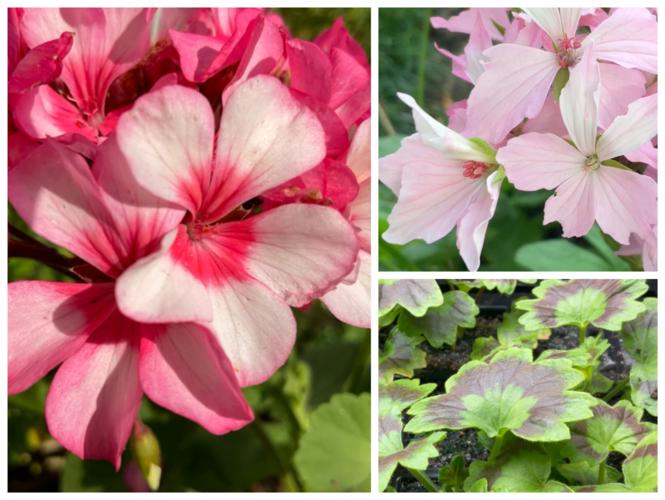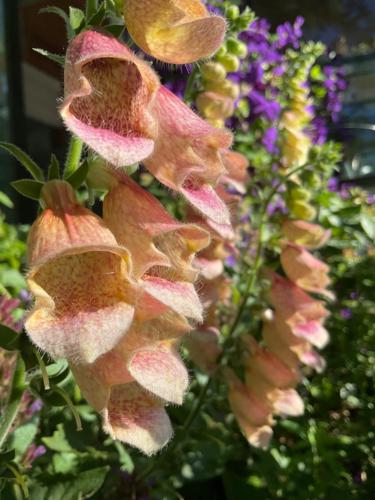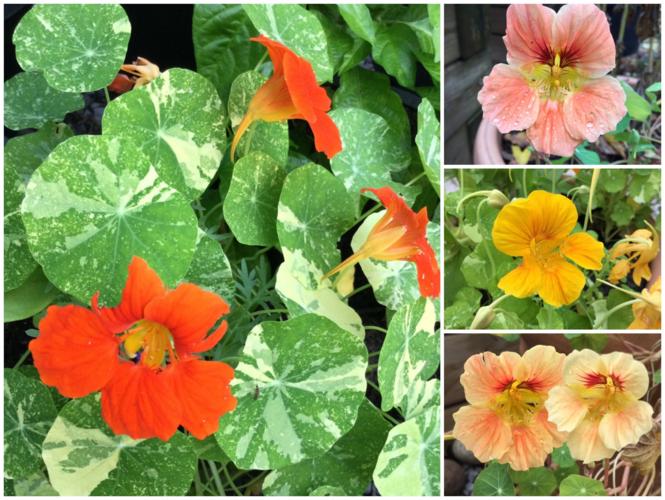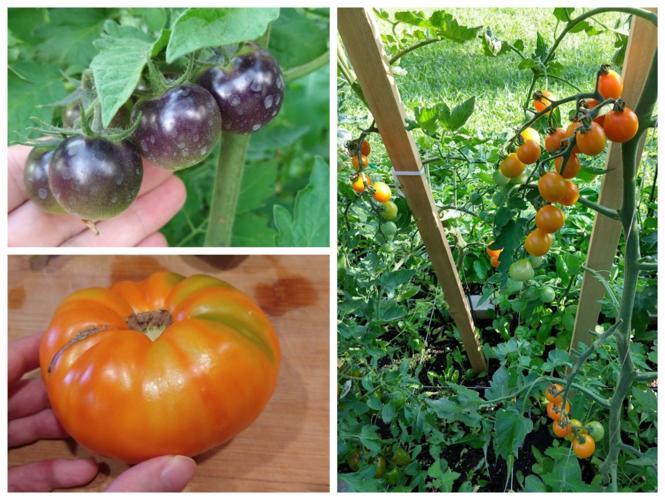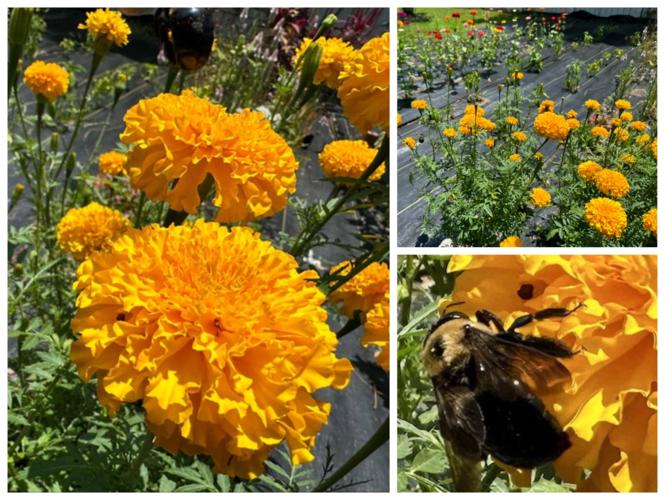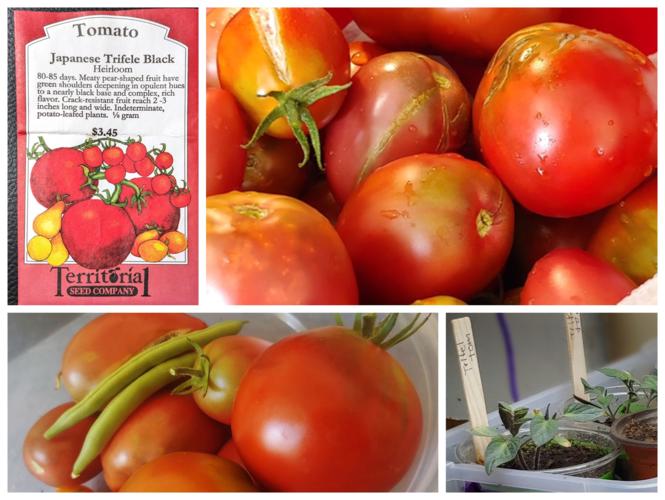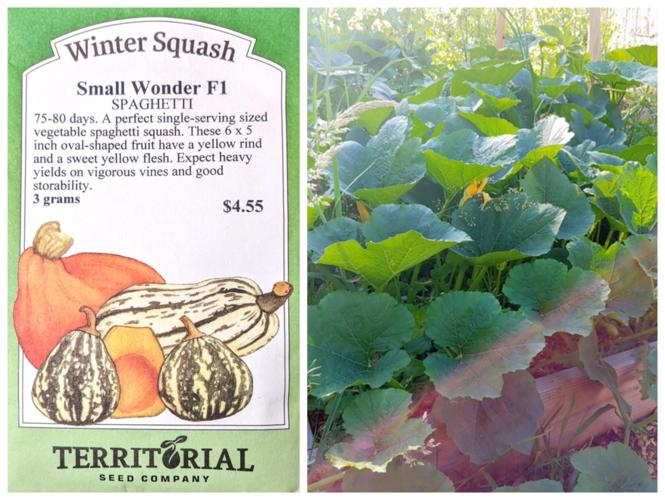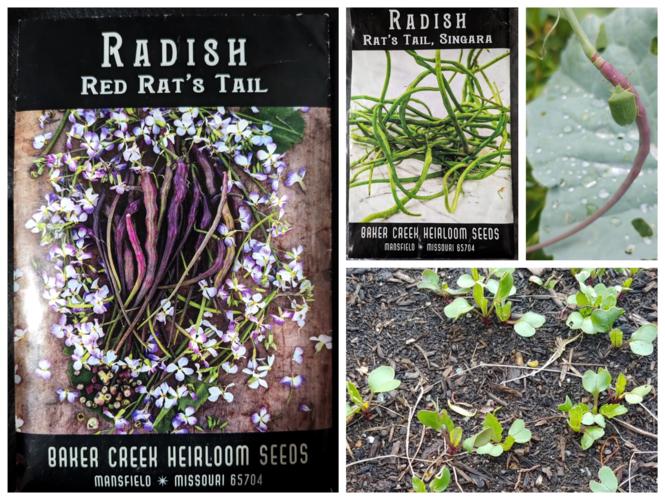February 3, 2024 by Garden Revival Members
Favorite Varieties to Grow from Seed
I have to admit to some hoarding tendencies when it comes to plant varieties and my habits are no different when it comes to seeds. Every year, I can’t wait to find out what new varieties of pelargoniums, agastache, nicotiana, tomatoes and other goodies will appear in seed catalogs. On top of that, I’m compelled to try older varieties I haven’t tested yet. The seed starting excitement makes winter bearable and a seed packet or 50 can really improve a girl’s mental health, amirite?
I’m sure I’m not alone in my seedy little vice. Besides, a public benefit can come of it as we share our favorite varieties to grow from seed with other gardeners who might not care to experiment as much or those who take (arguably) better care of their finances by curbing garden related spending. Here are a few of my recommendations followed by more from other Garden Revival community members:
Pelargonium × hortorum (Zonal Pelargonium)
I used to strongly dislike pelargoniums (more commonly referred to as geraniums). I’d only ever seen bright red ones with solid green leaves and to be honest, I thought they were boring. As I ventured further into my gardening obsession, I found out about the incredible variety in this genus and that seeds for dozens of varieties (mostly Pelargonium × hortorum) were available to home gardeners. I’ve been making my way through that selection but keep coming back to 3 favorites.
‘BullsEye Salmon’ has delicate light salmon flowers, contrasted against deep green, almost brown foliage with a narrow green margin. I’ve yet to find another variety with such a subtle salmon/coral tint, most have a much more brash coloration.
‘Maverick Star’ has bicolor blooms that are a bright magenta at the center and all along petal edges and pale pink in between. The coloration is at its most striking in cooler temperatures when the pale pink fades to white.
‘Quantum Light Pink’ is a stellar pelargonium, literally and figuratively. I’m sure I’m not the first to have made that joke about stellars, a subgroup of the zonal pelargonium, but it had to be said. The delicate star shaped flowers and finely cut bicolor foliage make this a real stand out variety. The salmon colored variety is beautiful as well, but the light pink has outperformed it in vigor every year for me so far. It also seems to have a nicer growth habit with more branching. I haven’t tried red and pink, the other colors in the ‘Quantum’ line. Unfortunately, seeds for this series can be difficult to find.
Pelargoniums are tender perennials. You can overwinter them indoors (under grow lights, if possible), pruning to promote branching and enjoy them outdoors in the summer. Watching pelargoniums grow is incredibly fun, the first set of true leaves making an intricate streetscape of umbrellas in the seed tray. And pelargonium cuttings are easy to root to make new plants.
Digitalis (Foxglove)
Being a big fan of English gardens, I’m predictably fond of foxgloves. What’s not to love about the elegant towers of colorful little bells, often with intricately speckled throats. It’s not uncommon to see a fuzzy little bee bottom sticking out from one of those bells — an absolute delight to behold. Most varieties of Digitalis are biennial, with a few new cultivars blooming in the first year and, subsequently, not even making it to year two. But the lovely hybrid ‘Polkadot Polly’ is a perennial, reliably coming back in my garden with no loss of vigor for the past five years. The peach colored blooms are fuzzy and the foliage is a shiny deep green. The well branched plants put on a good show in June but continue to put out less robust blooms throughout the summer and into fall. This is another seed variety that’s surprisingly difficult to find considering how great of a performer it is.
— IG
Tropaeolum minus (Nasturtium)
With their richly coloured single blooms, ranging from vivid oranges to soft peaches and unique marbled green and cream foliage, ‘Alaska Mix’ nasturtiums are a must-have for me every year. Dead simple to start from seed, these beauties will lend a vintage cheerful vibe to your garden.
Edible leaves and blooms add a peppery bite to salads and can be used as a summery garnish to impress guests. You can even pickle the seeds to make a caper alternative, though I have yet to give that a try.
Despite its name, ‘Alaska’ can withstand the summer heat, though it will slow down a bit in extreme temperatures. It held up beautifully for me all summer in zone 5b. A compact and bushy variety, it won’t vine like other nasturtiums — perfect for pots.
I absolutely adore the round leaf shape and lovely variegation ‘Alaska’ brings to the garden. It blooms until frost, which for me was at the end of October this year. Unbothered by most pests, critters and diseases, nasturtiums are drought resistant and almost carefree, which is a type of plant I think we could all use a little more of in our lives.
— Anna
Solanum lycopersicum (Tomato)
Having grown up hating tomatoes, it feels kind of weird to be thinking about my favorite tomato. I also can’t narrow it down to one. I like to experiment each year with new varieties, but there are a few must-grows. I’m not good at describing the flavors of tomatoes (sorry), but I know what I like.
‘Praxxus’ — I was given these seeds for free last year and I love them. They’re a cherry variety with delicious fruit, and a pretty heavy producer. The foliage is ridiculously dense, making it easy to miss fruit that’s hiding in the plant.
‘Sungold’ — my favorite, I’ve been growing these for 7-8 years now, I think. Another cherry variety, very sweet, but balanced acidity. Most of these seem to disappear when picking and don’t make it inside.
‘Amana Orange’ — I’ve been growing this beefsteak variety for a few years now. It’s a beautiful orange, sweet and tangy. I’ve seen it described as “tropical” which is kind of a stretch but I guess I get it if I squint my tongue really hard. These are great on salads and amazing on BLTs.
‘Blueberry’ — Another cherry variety. These are a close second favorite to the Sungolds. They’re a beautiful dark purple and red. Sweet, but more balanced than Sungold. I love these for snacking, salsa, and on salads.
— hypnotater
Tagetes erecta (African Marigold)
As a discerning gardener with specific requirements for my plants, I've found a true gem in ‘Coco Gold’ marigolds. These marigolds have become a staple in my home bouquets thanks to their impressive qualities. Firstly, they boast a long growing period, ensuring a steady supply of blooms. The upright habit and long stems of ‘Coco Gold’ marigolds are perfect for cutting, making them ideal for ornamental use in vases and arrangements.
What sets these marigolds apart is their remarkable resilience and ease of care. Despite minimal watering, they produce large, vibrant flowers throughout the season. Even when I cut large portions for my bouquets, these plants continue to flourish, unfazed, providing an abundance of blooms. However, it's crucial to note that as the plants mature, there's a noticeable decline in the quality of the flowers. This calls for proactive planning to start growing more plants before this decline sets in. I learned this the hard way when I suddenly found myself without marigolds, realizing it was too late in the season to start anew.
An added delight in growing ‘Coco Gold’ marigolds is their attractiveness to bees. Watching these pollinators buzzing around the marigolds adds a joyful and lively dimension to my garden, while also contributing to the local ecosystem. ‘Coco Gold’ marigolds are not just a visually appealing choice for gardeners but also a practical and environmentally beneficial one, ticking all the boxes for both beauty and utility.
— Xenogerm
Solanum lycopersicum (Tomato)
‘Japanese Trifele Black’ These sit halfway between a dense sauce tomato and a nice moderately dry slicer tomato. I love the odd green gradation they keep at their stem end, and I love the slightly smokey-beefy flavor they have even more. The bowls and bowls full of delicious tomatoes that convinced my spouse that tomatoes weren't disgusting.
These guys are a "potato leaf" varietal, and I don't know why but I just love that. They always stand out amongst my tomato babies in the spring. The plant gets to a pretty average height for an indeterminate tomato so it'll definitely need some staking, but less than a bigger heftier tomato would. One of the few varietals where I've completely used up a seed packet over the years, and actually bought a second one from the supplier.
The cracking looks bad in this photo, but this was after a massive late fall rainstorm, and still only about half the unpicked tomatoes on the plant had started cracking. I don't baby my plants so a lower cracking varietal is super helpful.
But honestly? It's just a good tasting tomato with a perfect texture between juicy and meaty, without being too crazy big and demanding. When I gift tomatoes to friends and family, this is the one that surprises them the most.
Cucurbita pepo (Squash)
‘Small Wonder’ spaghetti squash — I like spaghetti squash. I LOVE these ones in particular. My favorite two traits? They grow a little more spherical and a bit more sweet than your supermarket spaghetti squash. Their size is a perfect "dinner for two" (about the size of one of those tiny trash can hoop basketballs.) The plant gets big and sprawls heavily if it's happy with its conditions. Last year, one plant filled three paper grocery bags with squash that I'm still trying to pawn off on friends and family. (Each one is around two pounds, I'd say around 30 lb of squash from one massive vine.) It was the third year I grew these and I collected seeds to see if I could select for the rainy Pacific Northwest. This is a hybrid varietal, so the seed I saved might have been cross pollinated. Overall, ‘Small Wonder’ squash is nonplussed by heavy rain, hot dry weeks and intermittent conditions as long as the plants get full sun.
‘Candy Roaster, North Georgia’ winter squash — Upside? These squash are HUGE. They're each about the size of one of my ARMS. The flavor was really nice when I baked one up. A little sweet, and the flesh was silkier and smoother than most home-grown squash I've cooked. The downside? These squash are HUGE. All two of them. One big sprawly 8'x8' vine patch made exactly two behemoth squashes. I had to maneuver them around because they wanted to grow in the path and over a wooden board that would have grown a funny ridge into one squash. Be sure you're prepared to heavily train this one up an arbor, or give it lots of space to spread and root in to make tasty sweet long bois.
This varietal has these distinctly rounded leaves I found very charming! (And made it easier to visually trace who was who in the big squash vine bramble that formed last year.)
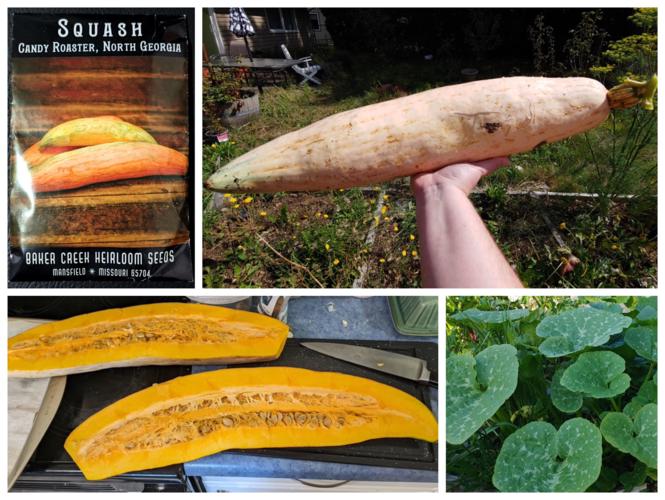
Raphanus sativus var. caudatus (Rat's Tail Radish)
‘Singara’ and ‘Red Rat’s Tail’— I bought these on a lark one day from Baker Creek. Sometimes I just look at new things I've never heard of before and try them. WOW. Have I told you the gospel of radish seed pods yet? Because you need these in your life. Rat’s tail radishes grow pitiful little woody roots. But they grow crunchy, tender, delicious seed pods. You gotta snip them off the plant within a short window — wait a little too long into their bolting period and they get papery. But when you catch them right, they taste like you stretched a sugar snap pea out long, and dipped it in a mild radish flavor. A bit of warmth, a bit of a bitter tangy edge and a great texture.
I would often see bugs around these plants, but I never saw much damage or injury to the plants and rarely ever would I see nibbles to the fruit itself.
They take up way less room than peas and beans do. Each plant grows 18-30" tall, though they can get a little floppy depending on how tightly you have them interplanted with other things. Since radishes (even these) tend to break up dense soil and play nice with other things (like you, squash. I'm talking about you, jerks), I sprinkle them throughout my garden and forage around to cut off greens for salads. My favorite way to use them is to snip off a handful fresh when I'm making a salad, dice them into 1/4-1/2" segments and toss them over the top of the salad like you might use green onion slices. I've used them similarly in ramen, rice and especially TACOS!
Also, the seeds you sprout that you need to thin? Radish sprouts are tasty, just saying! Additional note — you can eat the seed pods from standard radish, Raphanus raphanistrum, TOO! They're gonna be more spicy, and more watery-crunchy than rat’s tail, which are a little more tender-crunchy like a green bean.)
— CM Hanson (Plothole Tsi)
Some of the links in this post may earn Garden Revival a commission. Thank you for shopping through our links.
